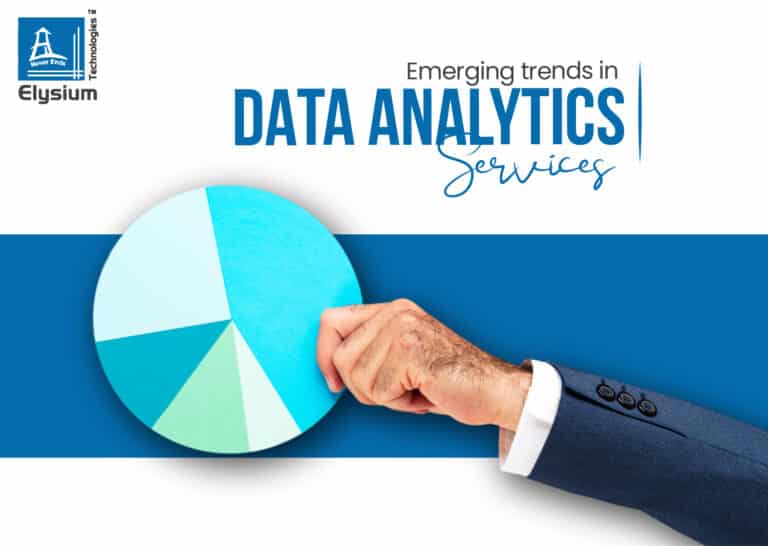10 Emerging Trends in Data Analytics Services
Trends in data analytics services convey business, market, and technology dynamics that cannot be ignored. These trends will also help prioritize investments to drive new growth, efficiency, resilience, and innovation. Here are the ten trends in data analytics services:
1. Adaptive AI systems
As decisions become more relevant, contextual, and continuous, reinventing how decisions are made becomes increasingly important. Adaptive AI systems can make faster and more flexible decisions by adapting quickly to changes. First, apply AI engineering techniques to create and manage adaptive AI systems. AI engineering makes adaptive systems easier to manage by tuning and optimizing applications to adapt, resist, or absorb disruptions.
2. Data-centric AI
Many organizations need to consider AI before addressing AI-specific data control issues. Therefore, it is important to formalize data-centric AI and AI-centric data. Systematically address bias, diversity, and labeling in your data as part of your data management strategy, for example, using a data fabric with automated data integration and active metadata management.
3. Always share data
Data and analytics leaders recognize that data sharing is a key component of digital transformation but must master the know-how to share data confidently and at scale. We work together across business and industry boundaries to facilitate data sharing and improve access to the right data aligned with the business case. This will accelerate buy-in for more budget literacy and investment in data sharing. For example, trends in data analytics services are considering adopting a data fabric design to enable a single architecture for sharing data across disparate internal and external data sources.
4. Context-Enriched Analysis
Contextual enrichment analysis is based on graph technology. Information about the user’s context and needs are captured in charts that enable deeper analysis using the relationships between data points and the data points themselves. It allows identify and develop further context based on associations, conditions, paths, and communities. Capturing, storing, and using contextual data requires the skills and ability to build data pipelines, analytical techniques, and AI cloud services that can handle different types of data.
5. Affiliated governance
Organizations require good governance at all groups that manage current operating challenges and respond flexibly, scalable, and quickly to changing market dynamics and strategic organizational challenges. However, the pandemic has further highlighted the urgent need for strong cross-functional collaboration and the willingness to change organizational structures to achieve business model agility. Use Connected Governance to establish a virtual layer of D&A governance across business functions and geographies to achieve desired business outcomes across your organization.
6. Natural Language Processing (NLP)
NLP is one of a subset of trends in data analytics services, linguistics, and artificial intelligence data analysis services that have evolved over the years. This field is primarily focused on human language and computer interaction. Specifically, it focuses on how to program computers to identify, analyze, and process large amounts of information from natural language, thereby improving their intelligence. NLP is aimed at reading and interpreting human language. NLP is expected to become increasingly important in monitoring and tracking market information as companies use data and information to formulate strategies for the future. Using grammar rules, his NLP techniques, such as syntactic and semantic analysis, require algorithms to extract key information from each sentence. In contrast to semantic analysis, which examines the meaning of data or text, the syntactic analysis focuses on sentence and grammatical issues related to data/text.
7. Scalability in Artificial Intelligence
Enterprises today are a blend of statistics, system architecture, machine learning implementations, and data mining. For consistency, these components should be combined into a flexible and scalable model that can handle large amounts of data. Learning or knowing about scalable AI is helpful because: First, the concept of scalable AI refers to algorithms, data models, and infrastructure that can operate at the speed, scale, and complexity required for the task. Second, scalability helps solve quality data scarcity and collection problems by reusing and recombining functionality to scale across business problems. Developing ML and AI for scalability involves establishing data pipelines, building scalable system architectures, developing modern collection methods, adopting rapid innovation in AI technology, and building and deploying data pipelines is required. Leverage cloud- and network-enabled edge devices and centralized data center capabilities to apply artificial intelligence to critical missions.
8. Comprehensive Analytics
Comprehensive analytics is one of the major trends in data analysis services worldwide. Comprehensive analytics utilizes machine learning and natural language processing to automate and process data to derive insights from data scientists’ and specialists’ processes. As a result, augmented analytics solutions help business users and executives better understand the business context, ask relevant questions, and discover insights faster. Advanced Analytics also helps analysts and advanced users perform more in-depth analysis and data preparation tasks, even those requiring deep analytical expertise.
9. Edge Computing
With the advent of 5G, edge computing has created various opportunities in various industries. In the world of edge computing, we are moving to compute and data storage closer to the source of the data to make it more accurate and manageable, reduce costs, deliver faster insight and action, and enable continuous operations. Make it possible. The pace of computing at the edge will increase dramatically from 10% to 75% by 2025. IoT devices embedded in edge computing can deliver increased speed, agility, and flexibility. It can also perform real-time analytics and enable autonomous behavior. Edge computing consumes less bandwidth and can process large amounts of data efficiently. In addition to reducing development costs, it facilitates software operation from remote locations.
10. Data Democratization
Data democratization aims to enable all members of an organization, regardless of their level of technical expertise, to feel comfortable working with data, discussing it confidently, and ultimately making it more. As a result, it leads to better decisions and customer experiences. Today, companies see data analytics as a critical business component and a core component of every new project. In addition, data democratization enables non-technical users to collect and analyze data without assistance from managers, system administrators, or IT staff. Artificial Intelligence Services, or AI for short, is a useful tool worldwide to promote equity, ensure inclusive education, and improve the quality of life of disadvantaged communities. Teams can make faster decisions by instantly accessing and understanding data. A democratized data environment is essential to managing big data and realizing its potential. Today, companies that empower their employees with the right tools and understanding can make better decisions and deliver better customer service.
Why Choose Elysium Technologies as Your Data Analytics Company?
Data Analysis Services enable organizations to collect, process, and present data in the form of actionable insights while avoiding the investment in developing and maintaining analytical solutions. For example, Elysium Technologies’ data analytics services supported a strategic market analysis for a management consultancy. In addition, we empower businesses to gain actionable external data insights through pre-built custom reports.















